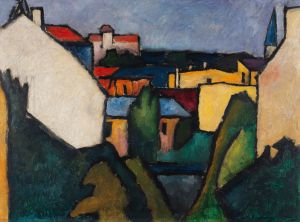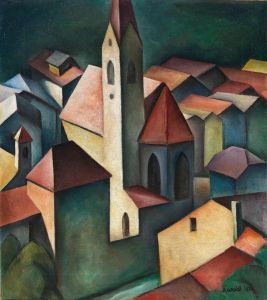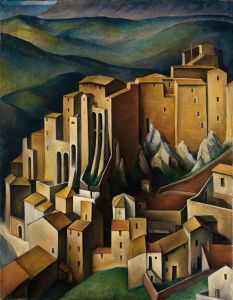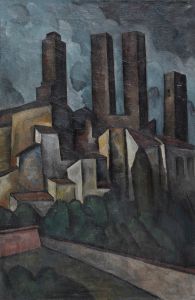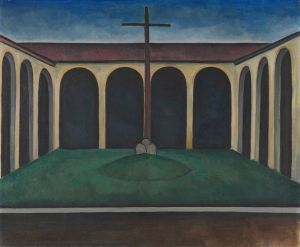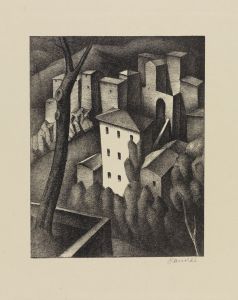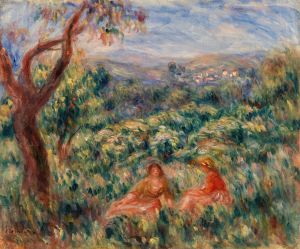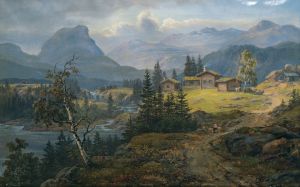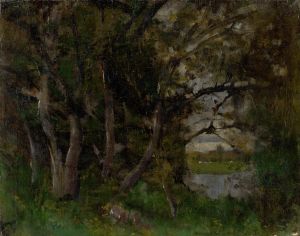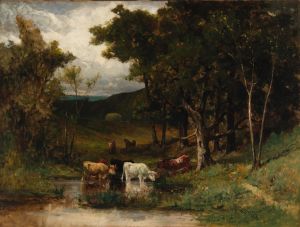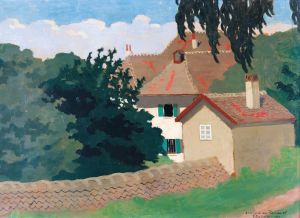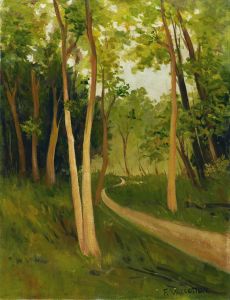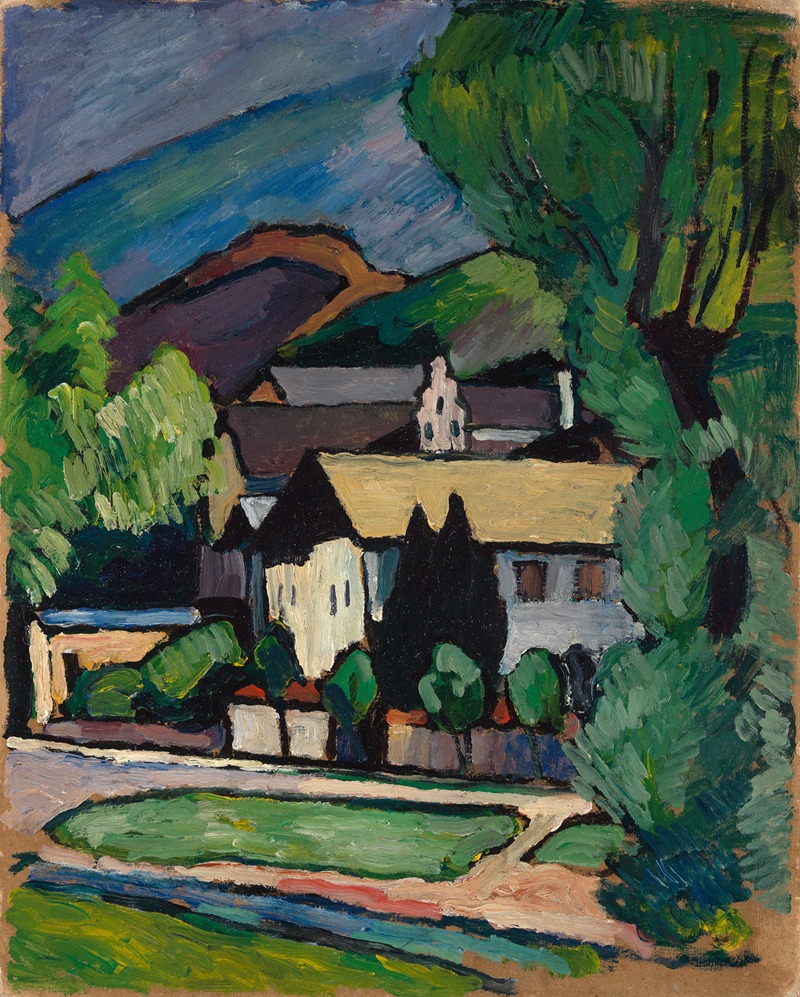
Bayerische Dorfhäuser unter Bäumen
A hand-painted replica of Alexander Kanoldt’s masterpiece Bayerische Dorfhäuser unter Bäumen, meticulously crafted by professional artists to capture the true essence of the original. Each piece is created with museum-quality canvas and rare mineral pigments, carefully painted by experienced artists with delicate brushstrokes and rich, layered colors to perfectly recreate the texture of the original artwork. Unlike machine-printed reproductions, this hand-painted version brings the painting to life, infused with the artist’s emotions and skill in every stroke. Whether for personal collection or home decoration, it instantly elevates the artistic atmosphere of any space.
Alexander Kanoldt was a prominent German painter associated with the New Objectivity movement, which emerged in the 1920s as a reaction against expressionism. His work, "Bayerische Dorfhäuser unter Bäumen" (Bavarian Village Houses under Trees), is a notable example of his contribution to this movement. This painting exemplifies Kanoldt's characteristic style, which combines precise realism with a serene and contemplative atmosphere.
"Bayerische Dorfhäuser unter Bäumen" depicts a tranquil rural scene, featuring traditional Bavarian village houses nestled among lush trees. The composition reflects Kanoldt's meticulous attention to detail and his ability to capture the essence of the Bavarian landscape. The painting is characterized by its clear lines, structured forms, and a harmonious balance between natural and architectural elements. Kanoldt's use of color is restrained yet effective, with earthy tones dominating the palette, which enhances the sense of calm and stability in the scene.
Kanoldt was born in 1881 in Karlsruhe, Germany, and studied at the Academy of Fine Arts in Karlsruhe. He was initially influenced by impressionism and later by cubism, but he eventually became a leading figure in the New Objectivity movement. This movement was marked by a return to realism and a focus on the objective representation of everyday life, often with a critical or satirical edge. Kanoldt's work, however, tended to emphasize the beauty and tranquility of the natural world, as seen in "Bayerische Dorfhäuser unter Bäumen."
Throughout his career, Kanoldt participated in numerous exhibitions and was associated with several influential art groups, including the Berlin Secession and the Novembergruppe. His work was well-received in Germany and abroad, and he played a significant role in shaping the direction of modern German art during the early 20th century.
"Bayerische Dorfhäuser unter Bäumen" is a testament to Kanoldt's skill in blending realism with a subtle emotional depth. The painting invites viewers to appreciate the quiet beauty of rural life and the harmonious relationship between human habitation and nature. It reflects Kanoldt's belief in the power of art to capture the essence of a moment and to convey a sense of timelessness.
Kanoldt's legacy continues to be celebrated in art history, and his works are held in various public and private collections. "Bayerische Dorfhäuser unter Bäumen" remains an important example of his contribution to the New Objectivity movement and his ability to create art that resonates with viewers on both an aesthetic and emotional level.
In summary, Alexander Kanoldt's "Bayerische Dorfhäuser unter Bäumen" is a significant work that showcases the artist's mastery of form, color, and composition. It embodies the principles of the New Objectivity movement while highlighting Kanoldt's unique perspective on the world around him. Through this painting, Kanoldt invites us to pause and reflect on the simple yet profound beauty of everyday life.





